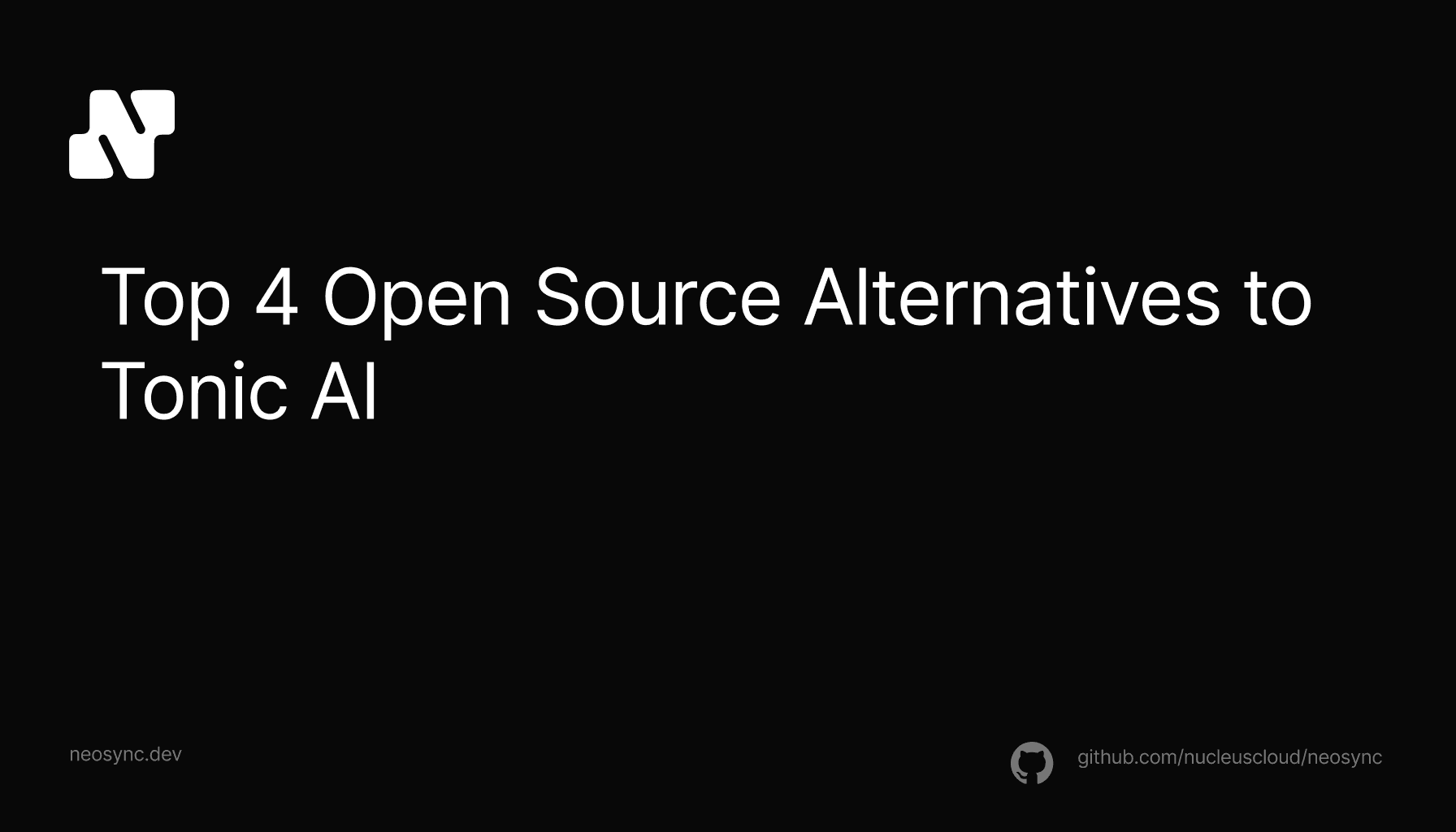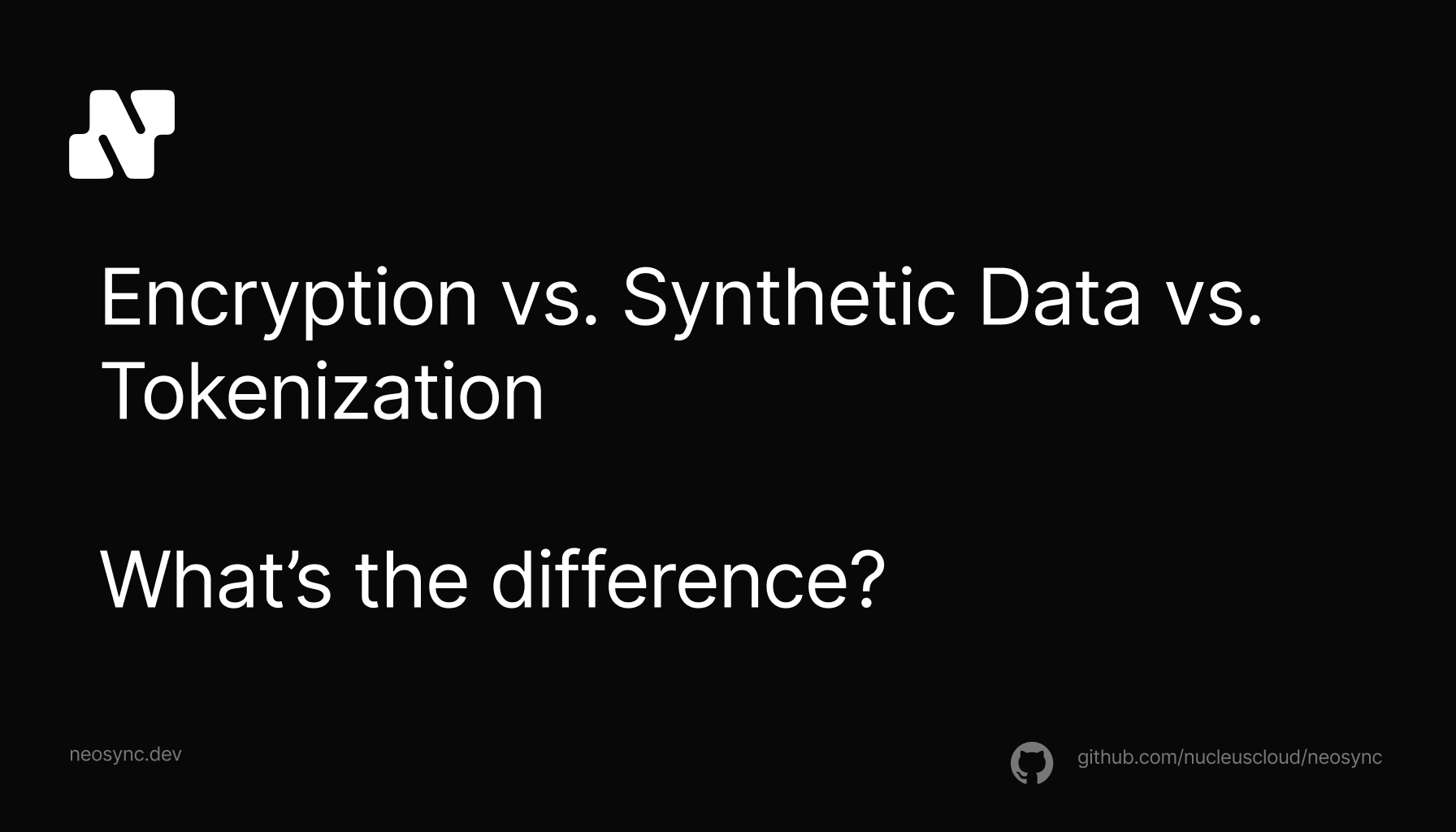
Top Open Source Alternatives to Tonic AI for Data Anonymization and Synthetic Data
Top Open Source Alternatives to Tonic AI for Data Anonymization and Synthetic Data
March 31st, 2025

For any engineer working with data, it's important that they understand the tools that are available to them to protect data and when to use them. Especially, in today's world, as more of the traditional security and data privacy work is shifting left toward developers. Three of the most effective methods to protect data are: encryption, tokenization and synthetic data. In this blog we introduce all three, talk about their use-cases and compare and contrast them.
Let's jump in.
Synthetic data is getting more and more attention these days with the rise of AI/ML and LLMs. Increasingly, more companies are using synthetic data for security and privacy reasons as well as to train models. We think of this as Synthetic Data Engineering. In the simplest definition, synthetic data is data that a machine has completely made up from scratch. For example, you can program a pseudo-random number generator (PRNG) to randomly select 5 numbers between 0 and 25. You can then use these randomly selected numbers as indexes in the alphabet to randomly select 5 letters. If you put those 5 letters together, you've created a synthetic string!
Obviously, this is a very simple example but the point remains. You can write programs to create data that "looks" just like real data. Additionally, using machine learning models such as generative adversarial networks or GANs, you can create synthetic data that has the same statistical characteristics as your real data. There are a number of synthetic data generators available that address different use cases. The key is to balance generation speed and accuracy. Some use cases such as analytics call for more accuracy (statistically) while other use cases, developer testing, call for more generation speed.
Synthetic data is being used by developers to build applications and machine learning engineers to train models. For developers, synthetic data is helpful:
We're seeing new use cases come up for synthetic data all of the time as more attention and time is being spent on methods to generate higher-quality synthetic data for developers and ML engineers.
Encryption has been around for decades and is a primary method for protecting data at rest and in transit. There are generally two ways to encrypt data: asymmetric encryption and symmetric encryption. The main difference is that in asymmetric encryption, you use a public key to encrypt data and then a primary key to decrypt data while in symmetric encryption, the same key is used to encrypt and decrypt data. There are pros and cons to both of these approaches and in another blog post we'll discuss what those pros and cons are. In today's world, we generally see more asymmetric encryption because it's more secure than we see symmetric encryption.
When you encrypt data you generally produce some alphanumeric text that can be decrypted to get back to the original data set. Although there are ways to still make the cipher text, what the encryption outputs, useful. Different types of encryption allow you to perform mathematical operations on data such as partially homomorphic encryption and preserve the format of the original data. This can be helpful in use cases such as third party data sharing and encrypted analytics.
Encryption is widely used for a number of use cases. Here are some of the most common:
Tokenization is encryption's lesser known cousin that can be even more secure than encryption! Tokenization is the process of converting a piece of data to another representation by using a look-up table of pre-generated tokens that have no relation to the original data. Another way to think about tokenization is to imagine a casino. When you go into a casino, you exchange cash for chips then use those chips in the casino and then when you're done, you swap the chips for cash again. Tokenization works in a similar way. You have some data that you give to a look up table, the look up table returns back a randomly generated token, then you can use that data until you're ready to swap it back for the original data.
The main difference between tokenization and encryption is that encryption is reversible from ciphertext -> plain-text while tokenization is not reversible. Meaning that if you have a token, there is no possible way to retrieve the original value without the look up table. No public or private key can reverse the data for you. This is why in some cases, tokenization can be more secure than encryption (at least theoretically). Encryption can be reversed with a key, tokenization cannot.
Lastly, similar to encryption, you can create different types of tokens that preserve the length, format and other characteristics of the input data. This is particularly useful for data processing such as lookups across databases.
Tokenization is widely used to protect sensitive data in financial services and card networks and is starting to gain popularity in other use cases as well.
Now that we've understood what encryption, tokenization and synthetic data are, let's look at the differences and similarities and better understand their use cases.
| Feature | Synthetic Data | Encryption | Tokenization |
|---|---|---|---|
| Input Format | Raw data from real datasets | Any data type (text, files, images, etc.) | Sensitive data (e.g., PII, payment info) |
| Output Format | New, non-real dataset mimicking original patterns | Ciphered text or binary data | Non-sensitive token or identifier |
| Is Reversible | Not applicable (generates new data) | Yes (with the correct key) | Conditional (secure lookup required) |
| Generation Method | Data modeling and algorithms | Cryptographic algorithms | Mapping to unique tokens |
| Use-Cases | Seeding databases, bug bashing, machine learning training | Secure data storage, secure communication | Payment processing, data anonymization |
| Data Utility | High (preserves statistical properties) | None (data is unusable without decryption) | Low to medium (depends on tokenization scheme) |
| Risk of Data Exposure | Low (no direct link to real data) | High (if encryption key is compromised) | Low (tokens are not meaningful) |
| Regulatory Compliance | Can aid in compliance by avoiding use of real data | Required for data protection laws | Often used for PCI-DSS, GDPR compliance |
Encryption, tokenization and synthetic data have similarities but also have key differences that are important for engineering and security teams to understand. These are all tools that every developer should be able to use given the right use cases. Hopefully, this was a good intro into the differences between encryption, tokenization and synthetic data.

Top Open Source Alternatives to Tonic AI for Data Anonymization and Synthetic Data
March 31st, 2025

Top 4 Alternatives to Tonic AI for Data Anonymization and Synthetic Data Generation
March 25th, 2025

Nucleus Cloud Corp. 2025